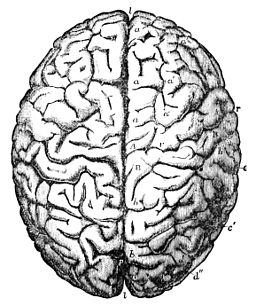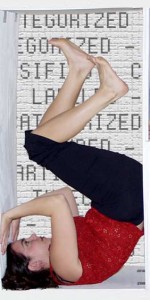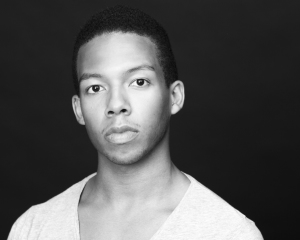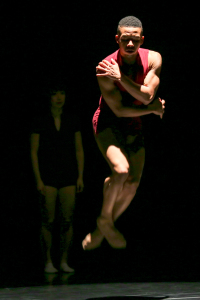
by Michael Estanich
As a dance artist I strive to build connections—between viewer and dancer, between music and action, between image and feeling. For me, moving is the purest way to do that, though its purity needn’t be exclusive. At RE|Dance Group, I develop work that explores the limitless range of human feeling. In order to accomplish this, I stack a variety of images atop each other in the hopes of crafting a multi-sensational experience for the audience. Because all of my senses so beautifully intertwine allowing me to feel deeply and experience life, I welcome all sensorial images into my work. I rely on the audience’s willingness to dispel tradition and embrace curiosity.
Text and visual design collide with movement in all of RE|Dance Group’s work. I create fully realized worlds where every action, sound, and visual carries important information in understanding the whole. I find that these multiple entry points invite the viewer to lean forward and feel.
I enjoy memories and remembering. There is visceral pleasure in retelling something from the past. To me, words and action are undeniably linked. I enjoy how memories translate in my body—through action and in words. I enjoy the process of connecting what I hear to what I see. It is remarkable how willingly the mind catches on and constructs truth and understanding when we engage with all of our senses.

There is comfort in language. We rely on it to let others know how we feel and what we need. To use language to share a part of myself seems so natural. To juxtapose language with motion excites me. Both together enrich the possibility to understand and to feel. This notion is important to me. I want the audience to know that we are complex, that we are moving, hearing, speaking, smelling, tasting, feeling beings and that they can recognize a part of themselves in a singular, special moment inside my work.
With that goal in my mind, I use whatever medium most potently communicates the idea—be it a sly, organic dancing trio, a cacophony of sound, a massive large-scale visual sculpture, or a simple connection through language. Each on their own is powerful art, but combined they produce a complex aural and visual landscape where, as an artist, I get lost in the beauty of my imagination.
See RE|Dance Group perform “It’s About Love Again This Year” at Links Hall, March 6-8 2015. Learn more about the company on the website.
 Michael Estanich (Artistic Director, RE|Dance Group) is an Associate Professor of Dance at the University of Wisconsin-Stevens Point. He teaches modern dance, composition, dance pedagogy, movement analysis and dance history. He earned his MFA from The Ohio State University and his BFA from Denison University. His creative research currently examines ideas of space, architecture, landscape and habitation often resulting in dances supported by sculptural environments. He and Lucy formed RE|Dance Group in 2009 as a means to explore long distance collaboration. Michael’s performance credits include Molly Shanahan/Mad Shak, Cerulean Dance Theatre, Rebecca Rosen, Melanie Bales, Bebe Miller and a reconstruction of Mark Morris’ acclaimed choreography All Fours. He teaches annually at the Trollwood Performing Arts School in Moorhead, MN and at the American College Dance Association (ACDA). He is the North Central Regional Director of ACDA.
Michael Estanich (Artistic Director, RE|Dance Group) is an Associate Professor of Dance at the University of Wisconsin-Stevens Point. He teaches modern dance, composition, dance pedagogy, movement analysis and dance history. He earned his MFA from The Ohio State University and his BFA from Denison University. His creative research currently examines ideas of space, architecture, landscape and habitation often resulting in dances supported by sculptural environments. He and Lucy formed RE|Dance Group in 2009 as a means to explore long distance collaboration. Michael’s performance credits include Molly Shanahan/Mad Shak, Cerulean Dance Theatre, Rebecca Rosen, Melanie Bales, Bebe Miller and a reconstruction of Mark Morris’ acclaimed choreography All Fours. He teaches annually at the Trollwood Performing Arts School in Moorhead, MN and at the American College Dance Association (ACDA). He is the North Central Regional Director of ACDA.














